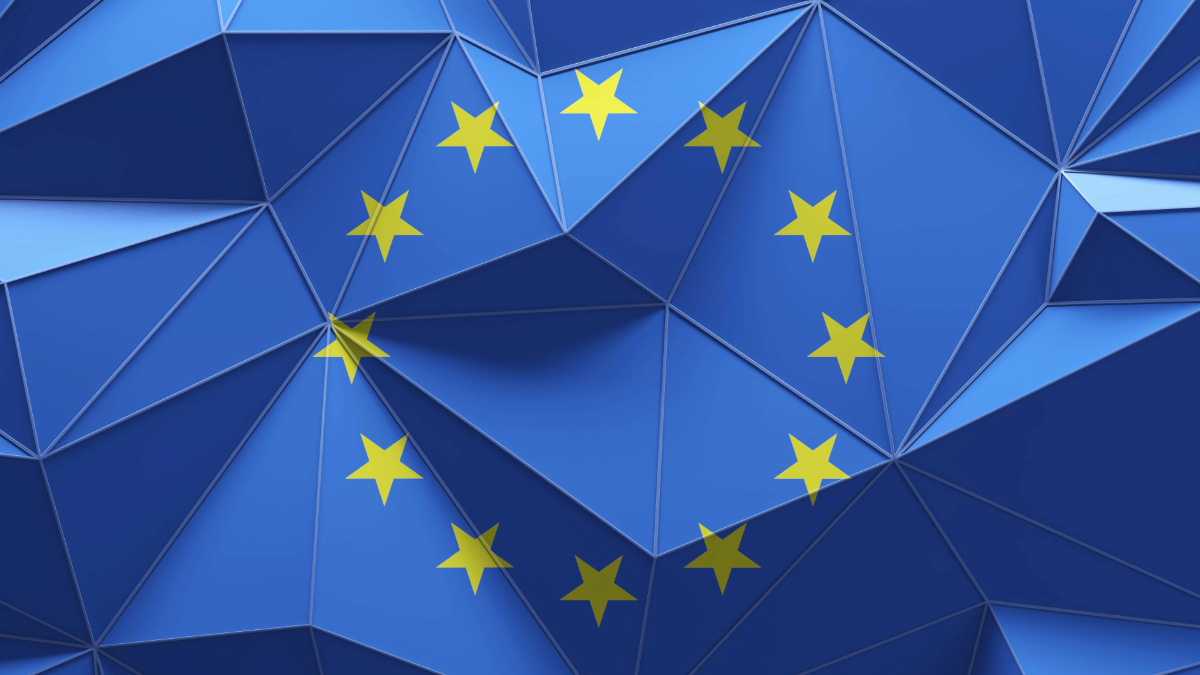Building Digital Sovereignty: What Does Europe Need and How to Achieve It
Zuzanna Warso / Oct 17, 2025This piece is part of the "Ideas for Europe’s Future" series by Tech Policy Press. Read more about the series here.
Donald Trump’s second US presidency pulled the rug out from under Europe’s feet.
Sociologist Susan Leigh Star once observed that “the normally invisible quality of working infrastructure becomes visible when it breaks: the server is down, the bridge washes out, there is a power blackout.”
This line has been quoted ad nauseam by scholars who study how infrastructure and society intersect, yet its lesson still seems lost on many policymakers. If the COVID-19 pandemic was not enough, Donald Trump’s return to the White House has ushered in a moment of infrastructural reckoning for the European Union.
In the same essay, Star observed that breakdowns expose the relational nature of infrastructure. In recent months, the EU has been learning the hard way that control over infrastructure and political self-determination are inseparable—a lesson rich in historical irony for a continent more accustomed to exercising power over others than being subject to it.
The shock of Trump’s aggressive attacks on European regulations, his America First doctrine, and skepticism toward transatlantic partnerships have crystallized a new consensus around an uncomfortable truth: Europe does not control the digital infrastructure it relies on.
Over the past few months, the response of the EU has become remarkably unified. Across Europe’s political spectrum, political groups in the European Parliament that seldom agree on much—from the Socialists and Democrats and the Greens to the centre-right and national conservatives—now share a conviction that the EU must reduce its digital dependencies and build capacity on its own terms.
Member of the Parliament Alex Agius Saliba, from the Socialists and Democrats (S&D) group, stressed the need to “reduce Europe's dependence on a handful of US tech oligarchs.” MEP Alexandra Geese of the Greens/EFA group has been a vocal advocate of technological sovereignty and an early proponent of a Eurostack.
Poland’s MEP Michał Kobosko from Renew Europe echoed this call, supporting the development of “a European digital ecosystem from top to bottom” to anchor Europe’s digital autonomy. MEP Axel Voss of the European People’s Party (EPP) outlined a ten-point plan for “Regaining Europe’s Digital Sovereignty.” Even MEP Sarah Knafo, from the far-right European Conservatives and Reformists Group (ECR), backed Parliament’s own-initiative report on technological sovereignty.
Support for this agenda extends beyond the Parliament. The Commissioner in charge of the EU’s digital policy portfolio, Henna Virkkunen, in a letter to the MEP from the Netherlands, Kim van Sparrentak, affirmed the Commission’s commitment to decreasing the EU’s digital dependency and to constructing the Eurostack as part of a broader strategy for technological sovereignty.
An intermediate consensus
The unity around “sovereignty” masks a deeper question that inevitably follows and underpins the current broad agreement: sovereignty for what purpose and in service of whose political project?
This is not a philosophical query, but a very pragmatic one.
As political economists Timo Seidl and Luuk Schmitz have observed, sovereignty functions as a convenient banner—broad enough to unite actors with diverging interests around a shared slogan without requiring agreement on its substance. In this sense, its ambiguity is a “feature, not a bug." This malleability, however, comes at a cost.
Earlier contributors to the debate have noted that digital sovereignty is not automatically tied to democratic legitimacy.
Historically, the language of sovereignty has served vastly different ends. A focus on sovereignty as control over infrastructure may be fashionable among defenders of European democracy, but it is equally compatible with the models of digital governance promoted by China or Russia. As internet governance expert Konstantinos Komaitis notes, sovereignty rhetoric can easily drift towards enclosure and fragmentation if it is not anchored in openness and shared governance.
The pursuit of total or unfettered control might seem like an abstract concern for a union founded on “respect for human dignity, freedom, democracy, equality, the rule of law, and human rights.” Yet as anti-democratic forces gain traction across Europe, it’s worth ensuring that the version of sovereignty that prevails and is implemented is one that couples control with democratic legitimacy.
To achieve this, policies addressing Europe’s sovereignty challenge should not be framed merely as responses to geopolitical or geoeconomic pressures. They must also confront a deeper issue: the political economy of digital infrastructure itself, one that rewards scale above all else, concentrates power, and crowds out competition.
As long as control over digital systems remains concentrated in vertically integrated actors, corporate or state, whose power rests on surveillance, data extraction, attention capture, and systemic lock-in, and whose scale places them beyond meaningful democratic accountability, dependency will persist.
This will hold true whether those systems are American, European, or Chinese. Unless, of course, you are one of the actors in control.
Critics are right that appeals to “European values” in the digital sovereignty debate often ring hollow. Yet this moment offers a chance to make those high-minded principles tangible.
Embedding democracy in Europe’s infrastructure
A vision of sovereignty that pairs control with democratic legitimacy demands infrastructure with architectural properties that enable user autonomy.
As the EU adopts a more active industrial policy, it can direct investment toward digital infrastructure with fundamentally different properties from today’s defaults: open-source components that prevent proprietary lock-in, federated architectures that distribute rather than concentrate control, interoperability standards that preserve user choice, and governance structures that enable accountability.
The upcoming 2028–2034 Multiannual Financial Framework (MFF), the EU’s long-term budget, together with initiatives such as the proposed public procurement directive reform and the Cloud and AI Development Act, provides a tangible opportunity to do just that.
In this context, Open Future has outlined five proposals — detailed in the policy brief From Public Investment to Public Value, that address key chokepoints in Europe’s digital dependency. Taken together, they aim to lay the groundwork for a form of sovereignty that balances control with democratic legitimacy:
Reform investment for long-term digital infrastructure
EU funding for digital technologies with an infrastructural role - from open-source software components to tools for online communication and collaboration - has often been short-term and project-based. The EU must reform its investment architecture, including the public procurement framework, to support the full lifecycle of priority public digital infrastructures that are essential to achieving sovereignty—from research and development to long-term maintenance and governance.
Support a sovereign and sustainable cloud ecosystem
Cloud infrastructure is the foundation upon which many other elements of digital sovereignty rest. The EU rightly recognizes it must invest in "sovereign" cloud alternatives. These investments must combine technical freedom with democratic and environmental accountability. That means infrastructure that distributes control through service unbundling, interoperability, data portability, and transparent pricing. But “cloud sovereignty” also requires the capacity to enforce collective constraints that markets will not self-regulate. The rapid rise of AI data centers already shows how unchecked digital infrastructure can strain power grids and drive up energy costs for citizens. The cloud expansion risks derailing climate goals if growth outpaces renewable energy supply and grid capacity, locking infrastructure into fossil fuel dependence. If the EU is committed to green transition, the sovereign cloud infrastructure must meet strict environmental requirements, including additionality criteria ensuring only newly added renewable capacity counts toward sustainability claims.
Use public procurement to drive adoption of “sovereign” solutions
The growing call to “Buy European” is an important step toward reducing dependence on foreign suppliers, but it will only foster a form of sovereignty that combines control with democratic legitimacy if it is paired with institutional reform and robust technical safeguards. Public procurement reform must strengthen the capacity of administrations to select and sustain open, interoperable, and trustworthy technologies. This requires equipping procurement agencies with the expertise, guidance, and support to evaluate and deploy open-source solutions, while ensuring that contracts embed clear provisions for interoperability, transparency, and exit rights.
Support democratic digital communication spaces
Social media platforms that currently shape public discourse are optimized for engagement. To counter the systemic risks this entails, the EU should treat communication spaces as critical public infrastructure and invest in alternatives that resist both corporate and state capture. Public institutions should lead by example, adopting these tools early to demonstrate their viability and build confidence. These alternatives can take complementary forms, tailored to different needs. Decentralized federated networks, such as the Fediverse, offer resilience against single points of control and enable community-driven governance, while more centralized platforms can still provide diverse, high-quality information environments if their governance and algorithms are transparent, independently audited, and preserve genuine user choice.
Support an independent institutional anchor for sovereign digital solutions
Some past initiatives that could have strengthened Europe’s technological sovereignty have faltered partially due to a lack of institutional continuity capable of sustaining them beyond short-term project cycles. This failure underscores the need for a dedicated setup able to maintain and scale what public investment helps to create. The Digital Commons European Digital Infrastructure Consortium (EDIC), currently under development, could offer a way to address this challenge. Introduced under the Digital Decade Policy Programme, EDICs provide a joint legal and operational framework for EU member states to co-develop, govern, and sustain digital infrastructure. DC EDIC could serve as the institutional anchor for critical open, interoperable, and publicly governed digital infrastructure. It would host and scale projects, ensuring they remain accessible and governed in the public interest. Strengthening this mechanism would allow the EU and its member states to turn short-term projects into durable systems, anchoring Europe’s digital sovereignty in stable, democratic institutions.
Can Europe build what it believes in?
The EU’s goal should not be to re-do the entire digital stack but to confront the structural bottlenecks that sustain Europe’s digital dependence. Strategic action is needed across all stages of the digital lifecycle, from how infrastructures are funded and designed to how they are procured and governed.
Europe’s talk of sovereignty must now translate into a durable, democratic infrastructure that people and institutions can rely on. The task ahead is to support systems that reflect Europe’s values in their design, governance, and use. The upcoming MFF budget negotiations and new digital legislation will be the test of whether those values are finally put into practice.
Authors

